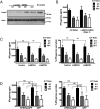The Tumor Antigen NY-ESO-1 Mediates Direct Recognition of Melanoma Cells by CD4+ T Cells after Intercellular Antigen Transfer
- PMID: 26608910
- PMCID: PMC4683358
- DOI: 10.4049/jimmunol.1402664
The Tumor Antigen NY-ESO-1 Mediates Direct Recognition of Melanoma Cells by CD4+ T Cells after Intercellular Antigen Transfer
Abstract
NY-ESO-1-specific CD4(+) T cells are of interest for immune therapy against tumors, because it has been shown that their transfer into a patient with melanoma resulted in tumor regression. Therefore, we investigated how NY-ESO-1 is processed onto MHC class II molecules for direct CD4(+) T cell recognition of melanoma cells. We could rule out proteasome and autophagy-dependent endogenous Ag processing for MHC class II presentation. In contrast, intercellular Ag transfer, followed by classical MHC class II Ag processing via endocytosis, sensitized neighboring melanoma cells for CD4(+) T cell recognition. However, macroautophagy targeting of NY-ESO-1 enhanced MHC class II presentation. Therefore, both elevated NY-ESO-1 release and macroautophagy targeting could improve melanoma cell recognition by CD4(+) T cells and should be explored during immunotherapy of melanoma.
Copyright © 2015 by The American Association of Immunologists, Inc.
Figures





Similar articles
-
Heat shock protein 90-mediated peptide-selective presentation of cytosolic tumor antigen for direct recognition of tumors by CD4(+) T cells.J Immunol. 2012 Apr 15;188(8):3851-8. doi: 10.4049/jimmunol.1103269. Epub 2012 Mar 16. J Immunol. 2012. PMID: 22427632
-
One NY-ESO-1-derived epitope that promiscuously binds to multiple HLA-DR and HLA-DP4 molecules and stimulates autologous CD4+ T cells from patients with NY-ESO-1-expressing melanoma.J Immunol. 2005 Feb 1;174(3):1751-9. doi: 10.4049/jimmunol.174.3.1751. J Immunol. 2005. PMID: 15661941
-
NY-ESO-1 119-143 is a promiscuous major histocompatibility complex class II T-helper epitope recognized by Th1- and Th2-type tumor-reactive CD4+ T cells.Cancer Res. 2002 Jan 1;62(1):213-8. Cancer Res. 2002. PMID: 11782380
-
Autophagy proteins influence endocytosis for MHC restricted antigen presentation.Semin Cancer Biol. 2020 Nov;66:110-115. doi: 10.1016/j.semcancer.2019.03.005. Epub 2019 Mar 27. Semin Cancer Biol. 2020. PMID: 30928540 Review.
-
Non-canonical Functions of Macroautophagy Proteins During Endocytosis by Myeloid Antigen Presenting Cells.Front Immunol. 2018 Nov 27;9:2765. doi: 10.3389/fimmu.2018.02765. eCollection 2018. Front Immunol. 2018. PMID: 30542350 Free PMC article. Review.
Cited by
-
The ATG8 Family Proteins GABARAP and GABARAPL1 Target Antigen to Dendritic Cells to Prime CD4+ and CD8+ T Cells.Cells. 2022 Sep 6;11(18):2782. doi: 10.3390/cells11182782. Cells. 2022. PMID: 36139357 Free PMC article.
-
TCR engineered T cells for solid tumor immunotherapy.Exp Hematol Oncol. 2022 Jun 20;11(1):38. doi: 10.1186/s40164-022-00291-0. Exp Hematol Oncol. 2022. PMID: 35725570 Free PMC article. Review.
-
Unveiling conserved HIV-1 open reading frames encoding T cell antigens using ribosome profiling.Nat Commun. 2025 Feb 18;16(1):1707. doi: 10.1038/s41467-025-56773-2. Nat Commun. 2025. PMID: 39966340 Free PMC article.
-
Autophagy Proteins in Viral Exocytosis and Anti-Viral Immune Responses.Viruses. 2017 Oct 4;9(10):288. doi: 10.3390/v9100288. Viruses. 2017. PMID: 28976939 Free PMC article. Review.
-
Immunoplasticity in cutaneous melanoma: beyond pure morphology.Virchows Arch. 2017 Apr;470(4):357-369. doi: 10.1007/s00428-016-2058-y. Epub 2017 Jan 5. Virchows Arch. 2017. PMID: 28054151 Review. No abstract available.
References
-
- Mandic M., Castelli F., Janjic B., Almunia C., Andrade P., Gillet D., Brusic V., Kirkwood J. M., Maillere B., Zarour H. M. 2005. One NY-ESO-1-derived epitope that promiscuously binds to multiple HLA-DR and HLA-DP4 molecules and stimulates autologous CD4+ T cells from patients with NY-ESO-1-expressing melanoma. J. Immunol. 174: 1751–1759. - PubMed
-
- Gnjatic S., Atanackovic D., Jäger E., Matsuo M., Selvakumar A., Altorki N. K., Maki R. G., Dupont B., Ritter G., Chen Y. T., et al. 2003. Survey of naturally occurring CD4+ T cell responses against NY-ESO-1 in cancer patients: correlation with antibody responses. Proc. Natl. Acad. Sci. USA 100: 8862–8867. - PMC - PubMed
-
- Cho H. J., Caballero O. L., Gnjatic S., Andrade V. C., Colleoni G. W., Vettore A. L., Outtz H. H., Fortunato S., Altorki N., Ferrera C. A., et al. 2006. Physical interaction of two cancer-testis antigens, MAGE-C1 (CT7) and NY-ESO-1 (CT6). Cancer Immun. 6: 12. - PubMed
Publication types
MeSH terms
Substances
Grants and funding
LinkOut - more resources
Full Text Sources
Other Literature Sources
Medical
Research Materials
Miscellaneous

